[Gumweeds: The Genus Grindelia East of the Cascade Mts. of Oregon and Washington]
Coastal Gumweed, Columbia Gumplant, Columbia Gumweed, Idaho Gumweed, Low Gumweed, Resinweed
Grindelia hirsutula
Synonyms: Grindelia arenicola, Grindelia columbiana, Grindelia hirsutula, Grindelia integrifolia var. macrophylla, Grindelia nana, Grindelia nana ssp. columbiana, Grindelia nana ssp. nana, Grindelia nana var. discoidea, Grindelia nana var. integerrima, Grindelia nana var. integrifolia, Grindelia nana var. nana, Grindelia squarrosa var. integrifolia, Grindelia squarrosa var. quasiperennis, Grindelia stricta ssp. stricta, Grindelia stricta var. stricta

The photo above shows a close-up of the flower head of low gumweed (var. nana) as seen from sandy soils above the Spokane River to the West of Long Lake in eastern Washington........June 25, 2006.
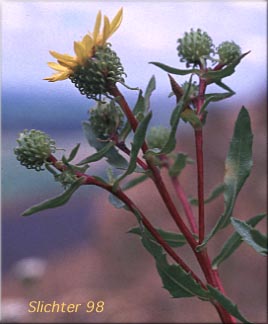 The photo at right shows low gumweed (var. nana) as seen from Steptoe Butte, Palouse
country in eastern Washington.........June 25, 2006.
The photo at right shows low gumweed (var. nana) as seen from Steptoe Butte, Palouse
country in eastern Washington.........June 25, 2006.
Characteristics:
Low gumweed is a smooth-surfaced perennial, having a taproot and many branched
stems. It ranges in height from 10 to 80 cm. The leaves are largest near the
base of the stems, and reduced in size towards the tips. Each leaf is spiny
margined to entire, with the lower leaves oblanceolate and occasionally clasping
at the stem, and the smaller upper leaves more often with clasping bases. Both
the leaves and stems are glabrous.
The flower heads have both ray and disk flowers. The involucre (or bracts
below the flowers) are conspicuously spiny-tipped, with the spines arcing outwards.
The bracts are also distinctly non-resinous.
The flower heads of variety nana have a disk about 8 to 15 mm across,
and an involucre about 1 cm tall. Variety integrifolia has disks to 25
mm across, and an involucre 10 to 17 mm high. The species has roughly 12 to
25 ray flowers.
Habitat:
Low gumweed is found in dry open places in the lowlands and into the foothills.
Range:
Variety nana is found primarily in eastern Washington
and northern Idaho, and southward to Union County, OR. Variety Grindelia
nana var. integrifolia is found in the range of the species, from eastern
Washington and eastern washington, extending east to western Montana, and also
found in northwestern California and southwestern Oregon. It may occur at other
western locations as an introduced weedy species.
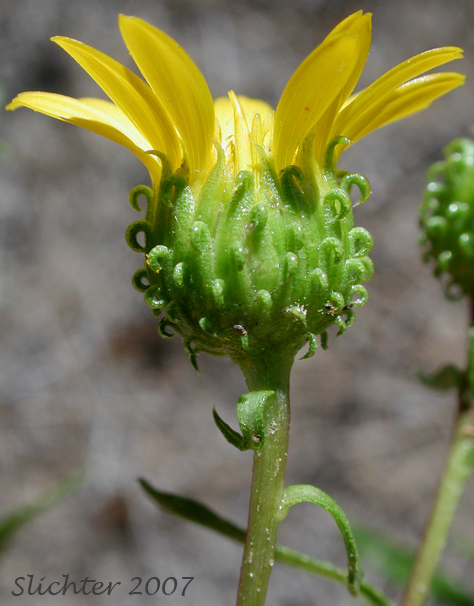 -
- 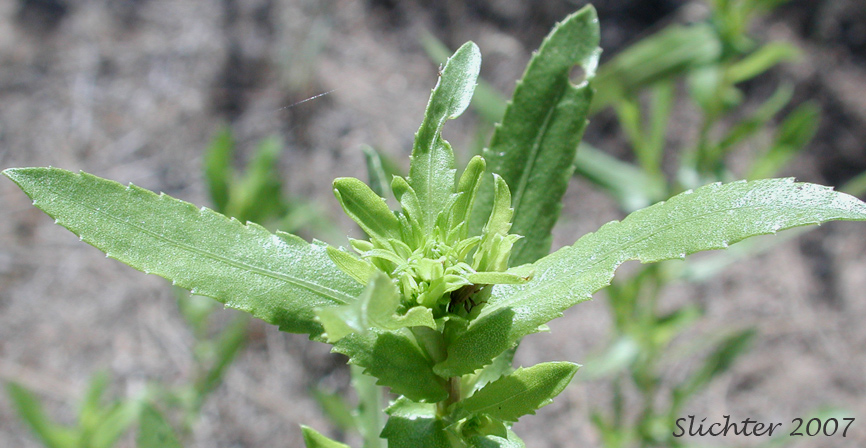
Close-ups of the distinctive involucre as well as the upper stem leaves of low gumweed as seen on sandy soils above the Spokane River to the west of Long Lake in eastern Washington.........June 25, 2006. Note the hooked tips to the involucral bracts, which are reflexed downwards.
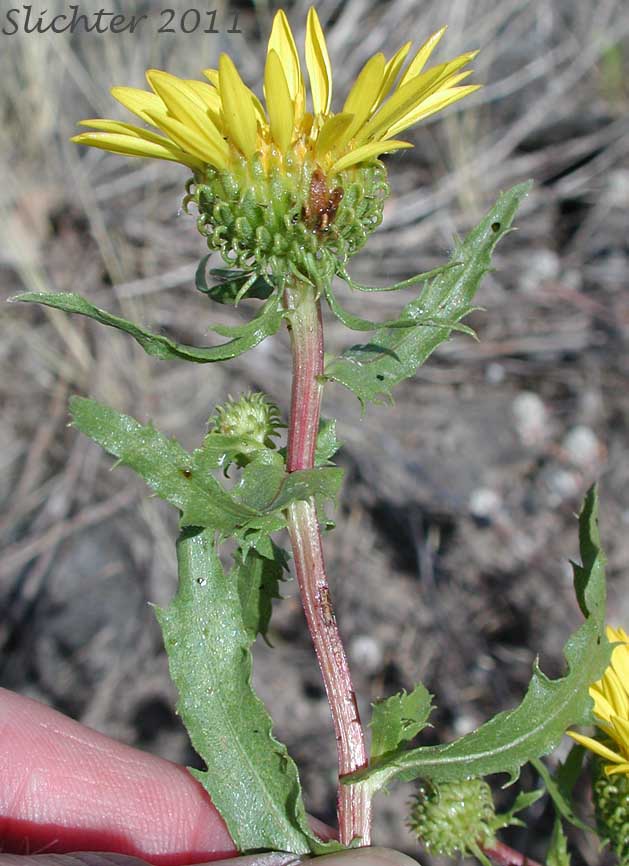 -
- 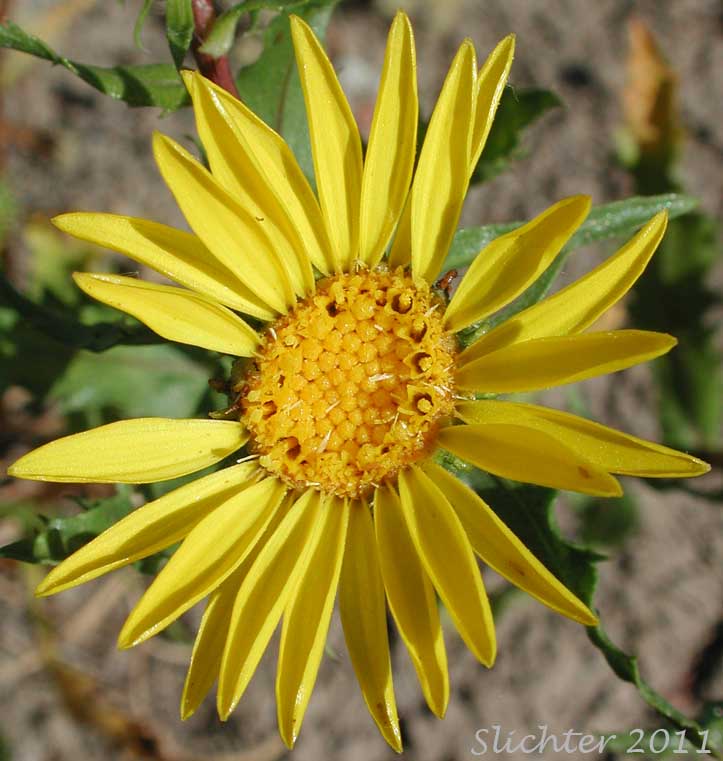
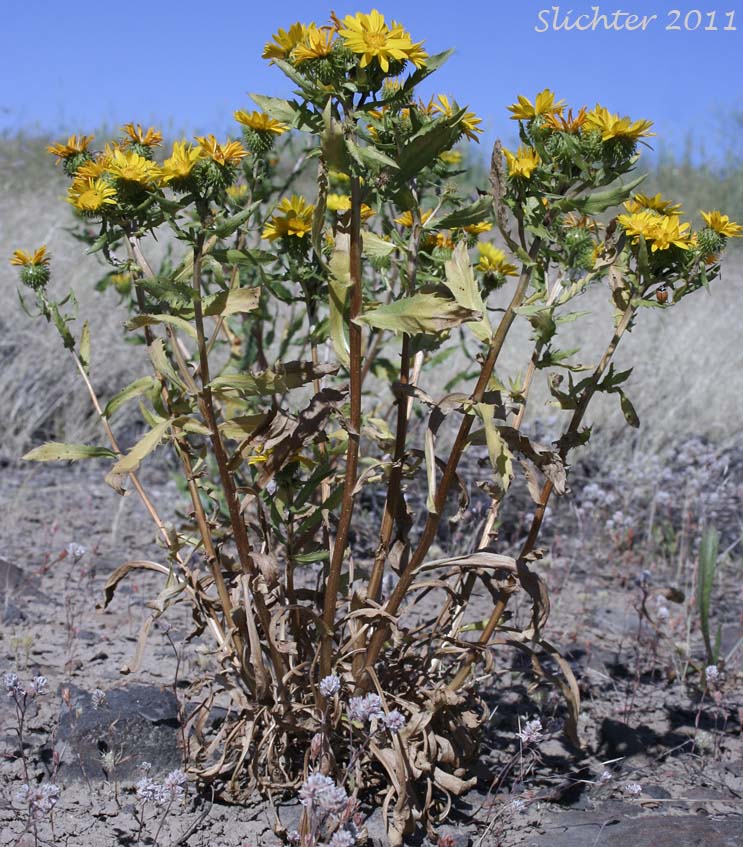 -
- 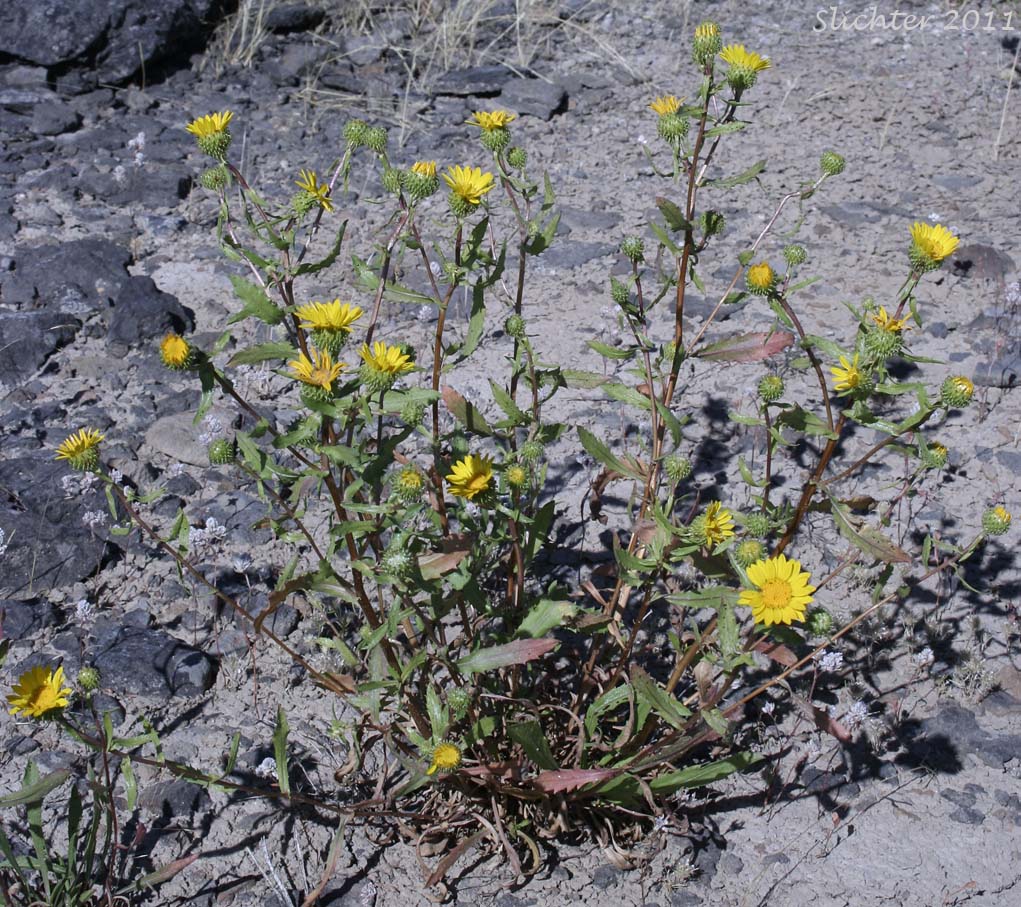
Additional close-up photos of low gumweed (In Hitchcock, var. integrifolia) as seen from alkaline soils in vernally moist swales along the old Sprague Highway west of Fishtrap Lake in eastern Washington.........July 6, 2011. This species is very similar in appearance to Grindelia squarrosa. I keyed this out to Grindelia hirsutula (Synonym of G. nana) using the Grindelia key in the eflora of North America (http://www.efloras.org/) based on the number of ray flowers and the sharp teeth along the leaf margins.
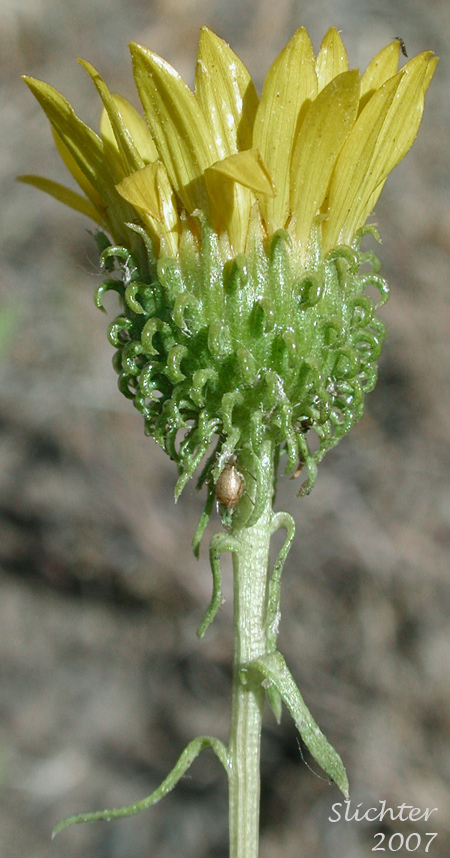 -
-  -
- 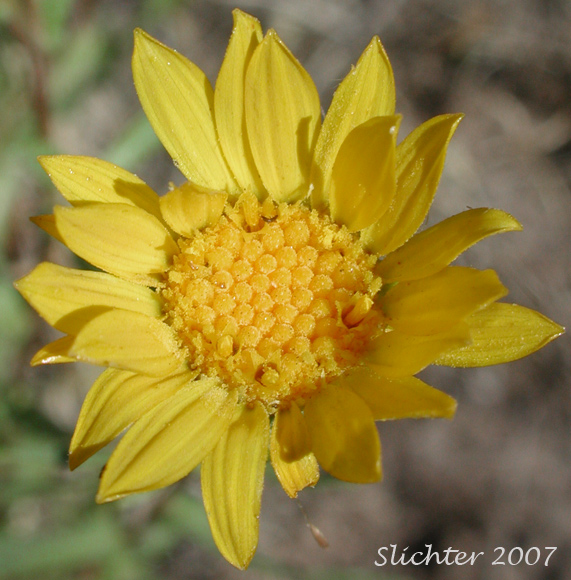 -
- 
The photos above show close-ups of low gumweed as it's found on Zumwalt Prairie to the northeast of Enterprise, OR.......July 9, 2007.
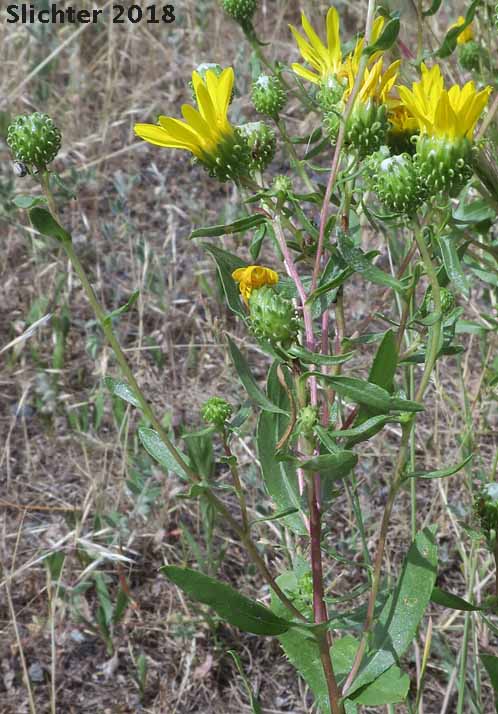 -
- 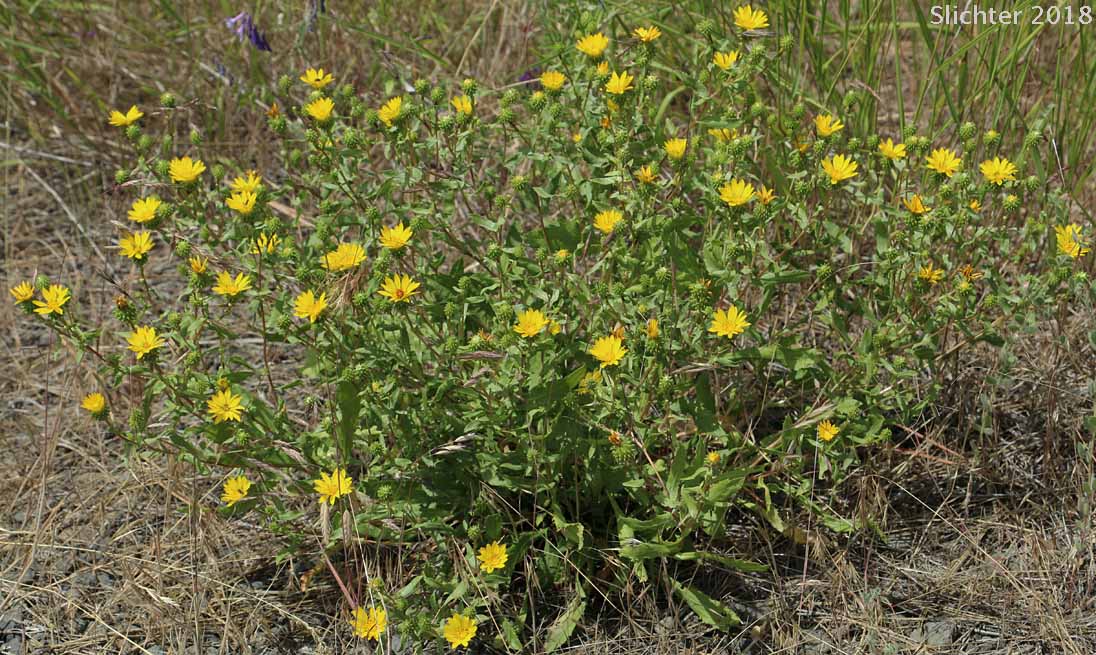 -
- 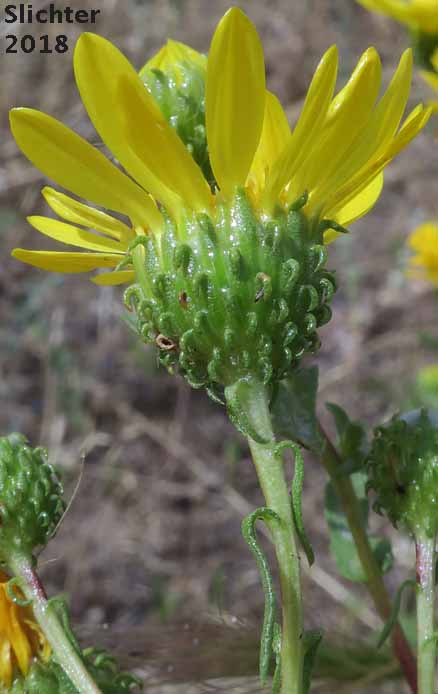
Examples of low gumweed as seen along the Stubblefield Trail, Turnbull National Wildlife Refuge.......July 4, 2018.
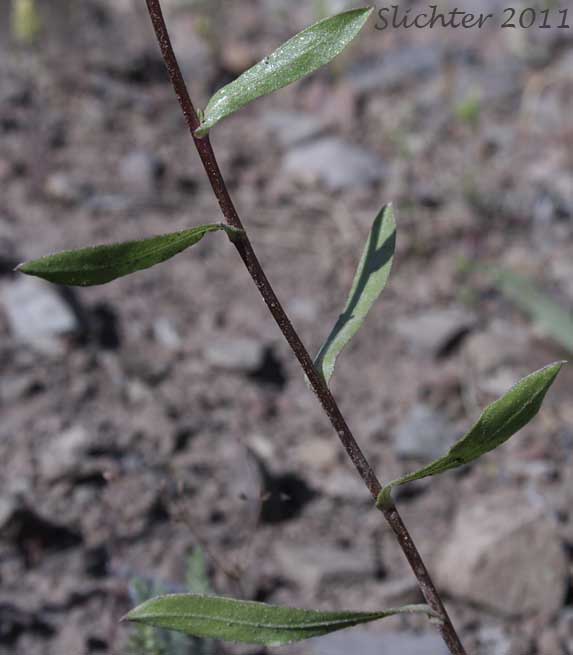 -
- 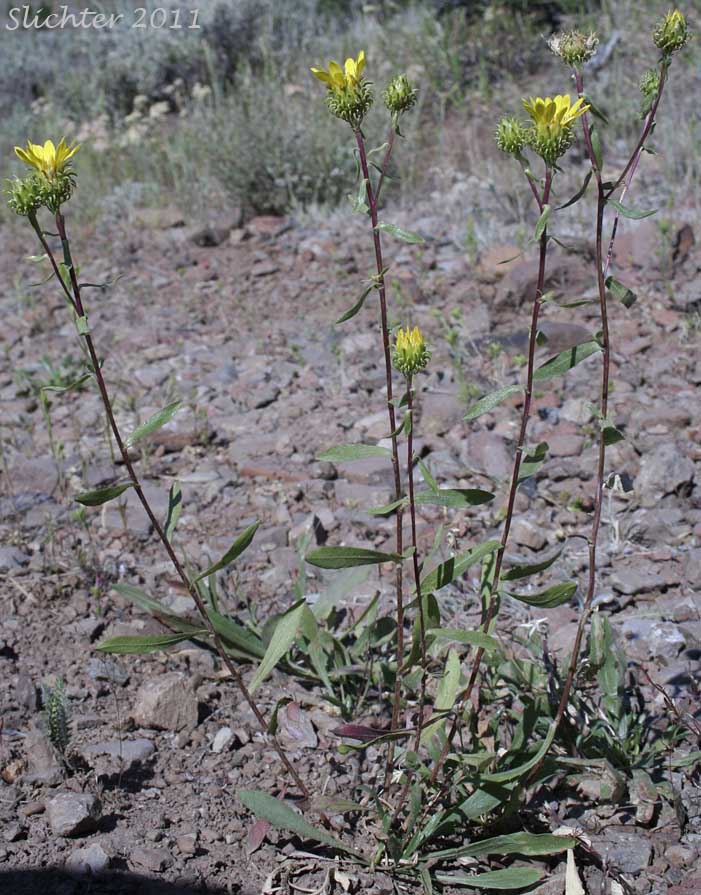 -
- 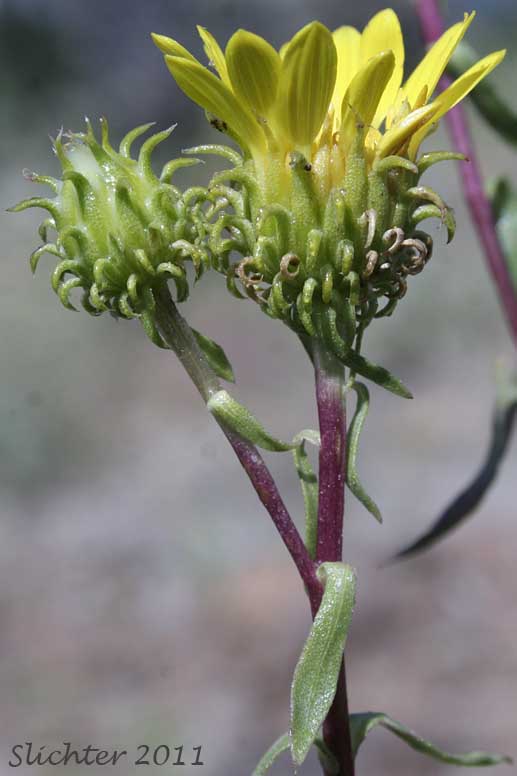
Examples of low gumweed blooming along Forest Service Road #1647 in southeastern Logan Valley, Malheur National Forest........August 3, 2011.
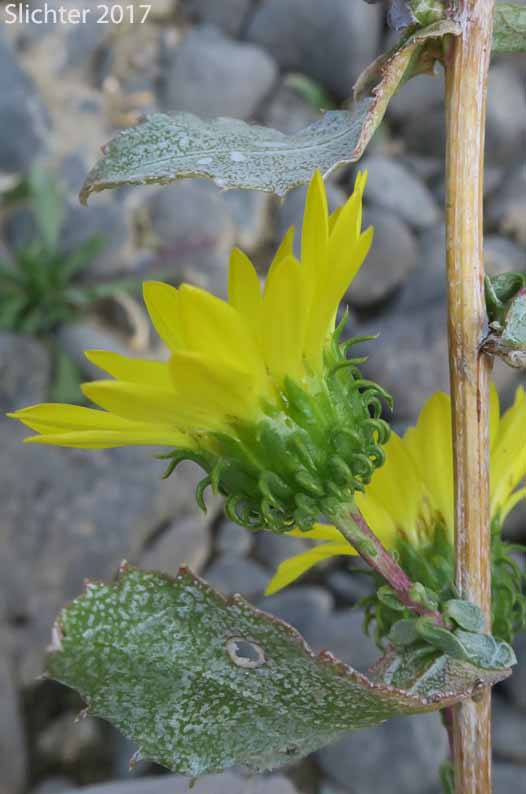 -
- 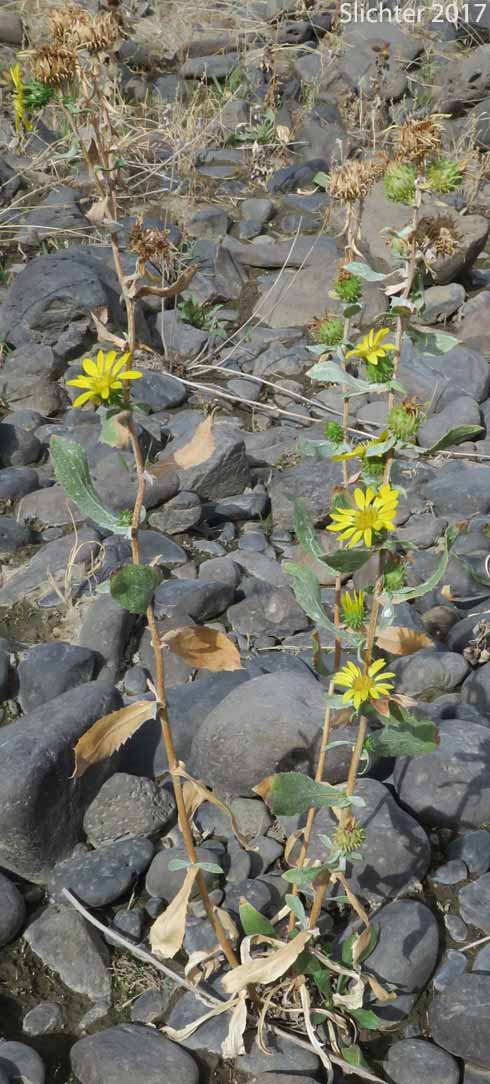 -
-  -
- 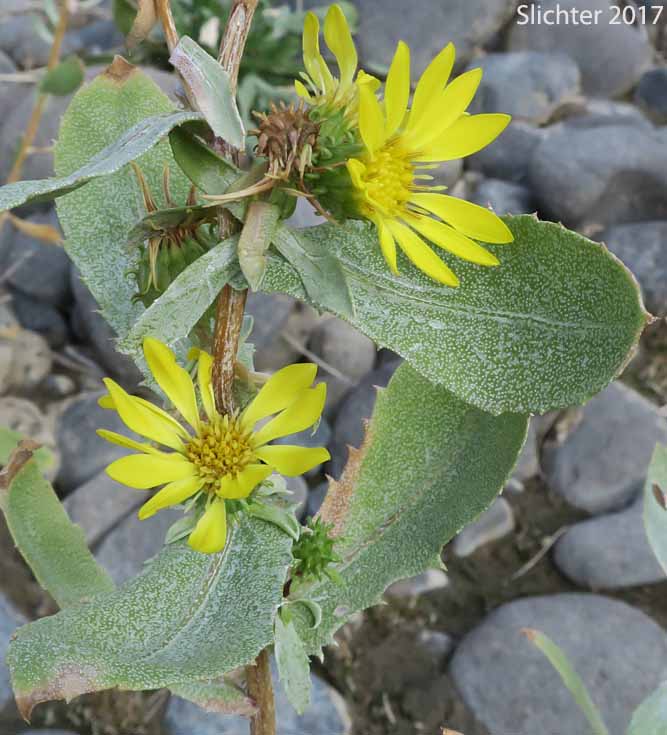
Low gumweed as viewed on a gravel bar on the east bank of the John Day River directly across from the camp ground at Cottonwood Canyon State Park........October 25, 2017.
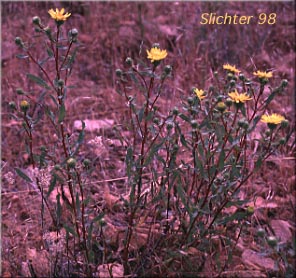 -
- 
Low gumweed (var. nana) from Steptoe Butte, Palouse
country in eastern Washington.........6/27/98.
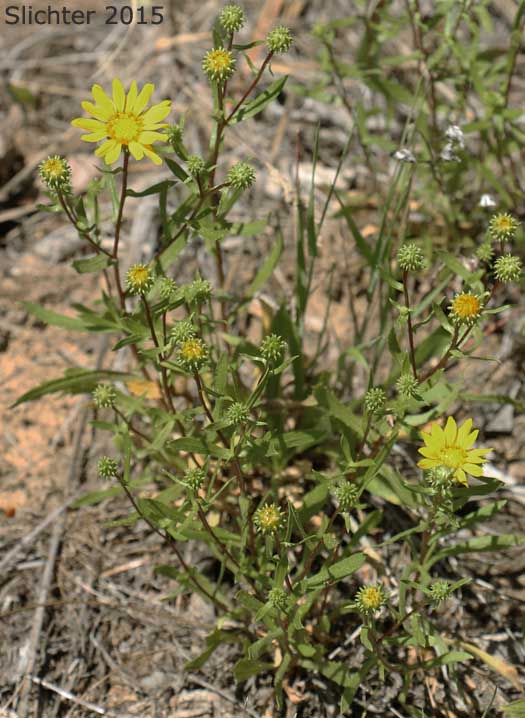 -
- 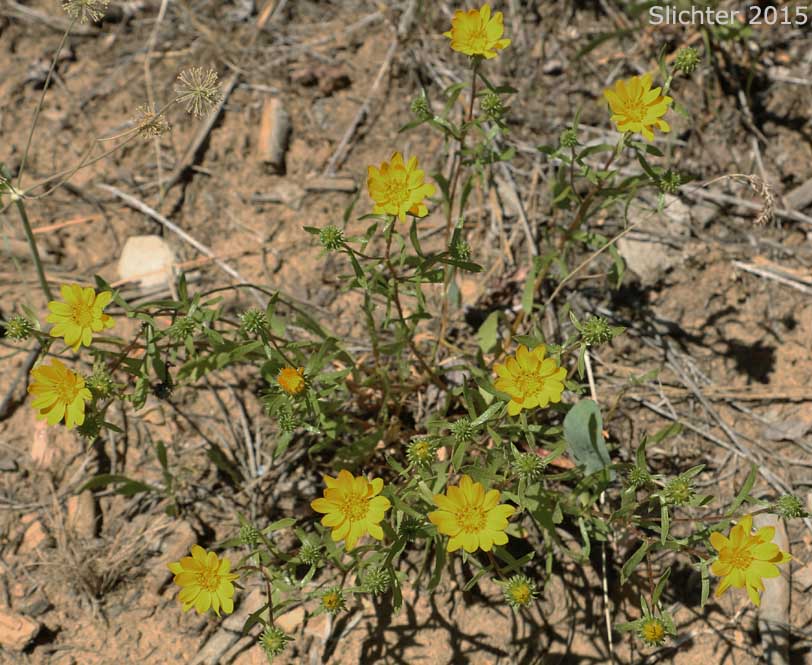
Photo above shows the upper stem leaves and hooked involucral bracts of low gumweed (var. nana) from Steptoe
Butte, Palouse country in eastern Washington.........6/27/98.
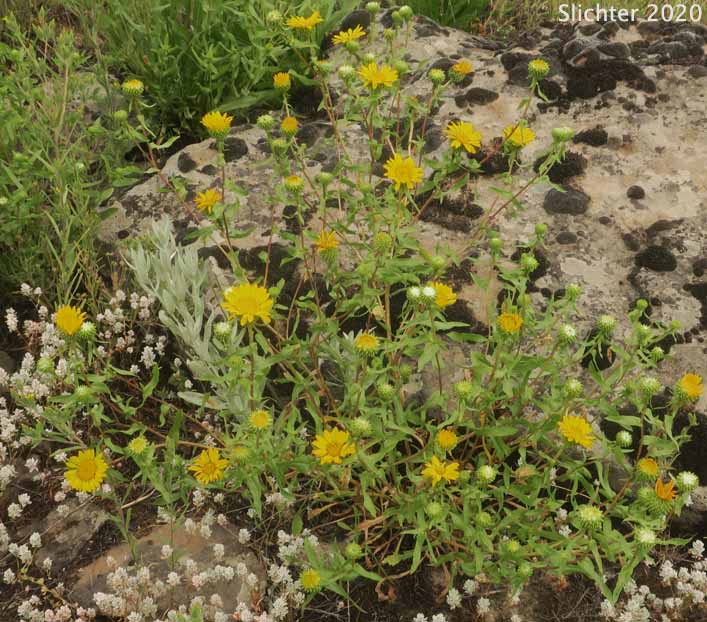
Low gumweed observed with close-flowered knotweed (Polygonum polygaloides ssp. confertiflorum) in a vernal pool along the Fishtrap-Sprague Highway near the junction with Miller Ranch Road East......June 28, 2020.
Paul Slichter
 The photo at right shows low gumweed (var. nana) as seen from Steptoe Butte, Palouse
country in eastern Washington.........June 25, 2006.
The photo at right shows low gumweed (var. nana) as seen from Steptoe Butte, Palouse
country in eastern Washington.........June 25, 2006.
 -
- 